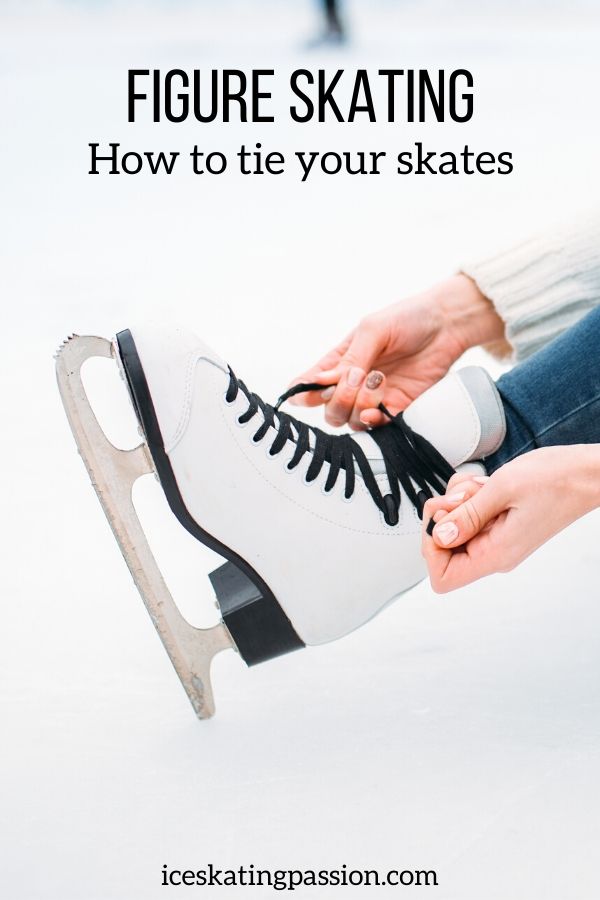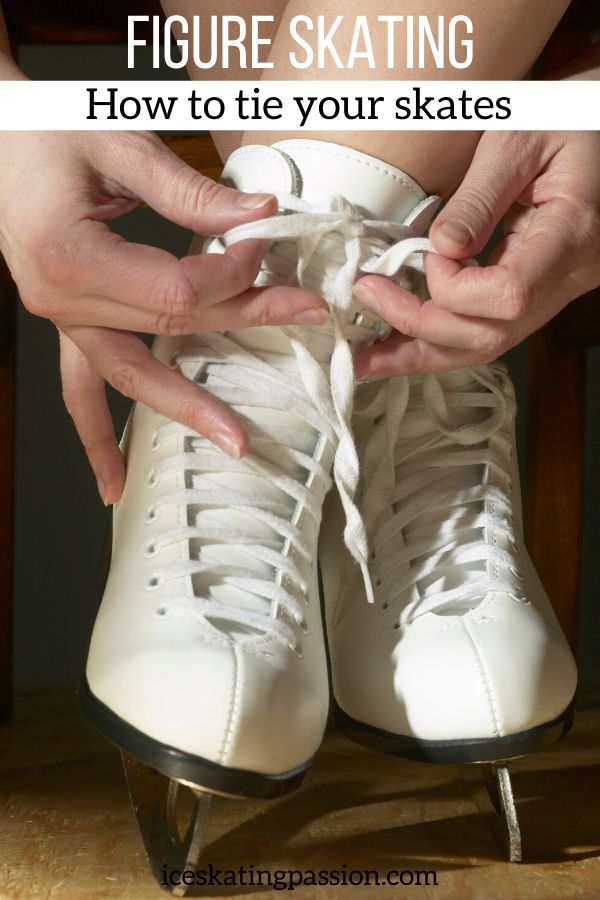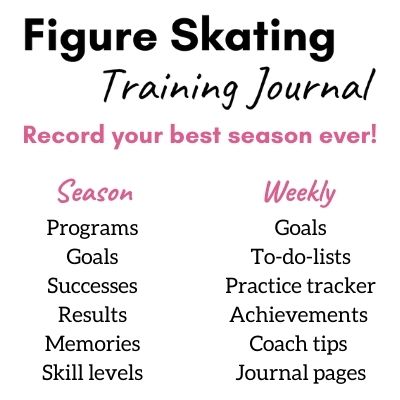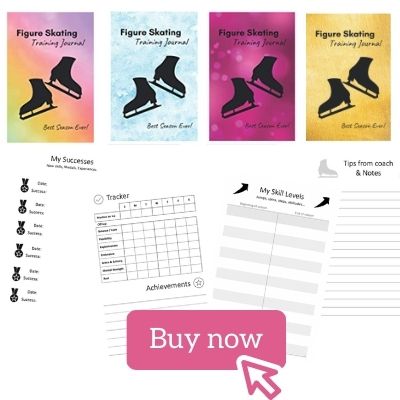Let's learn more about how to tie ice skates. It is the first technique you should learn to help prevent injury and facilitate your learning process. Below are all the essential informations to learn on how to lace figure skates (yours or those of your kids): from position, to tightness and locking.
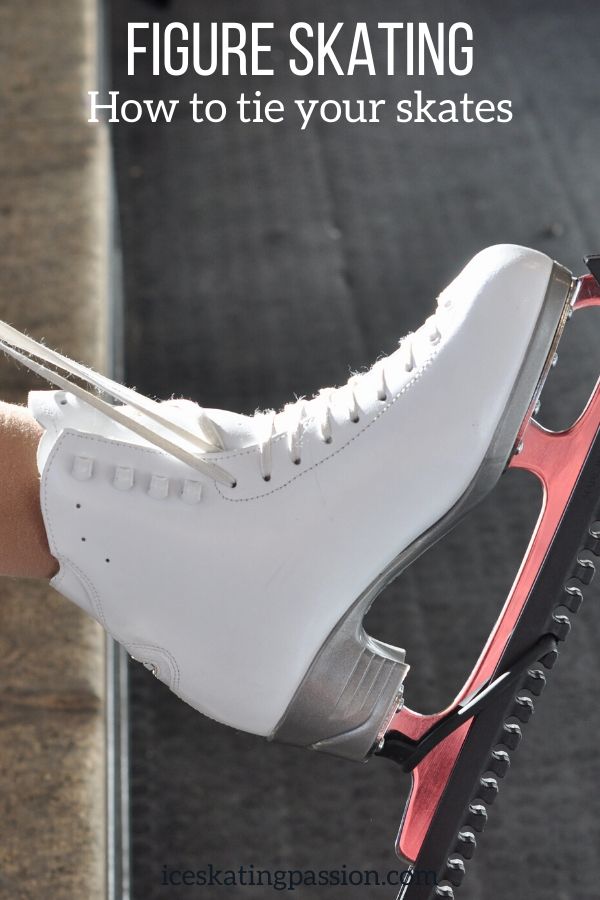
This article contains affiliate links. If you purchase using my link, I get a commission at no extra cost to you (learn more).
How to tie ice skates - summary
Why is proper lacing important?
Proper lacing ensures that your foot stays in a naturally locked position while you skate. Then:
- you get the best possible performance - allowing the right movements inside the boot and blocking others;
- you get proper support to prevent injuries;
- you take care of your skates and avoid premature wear-out.
What not to do
There are a few tendencies which are hazardous and wrong practice which cause discomfort:
- Tying them not tight enough is the commonest practice with parents who tie for kids. When the child starts on loosely tied skated the ankles are moving about in the shoe and they end up unsupported. This adds a lot of pressure on the ankles.
- The opposite is true as well. Too tight everywhere on the skate and the skater cannot do any moves.
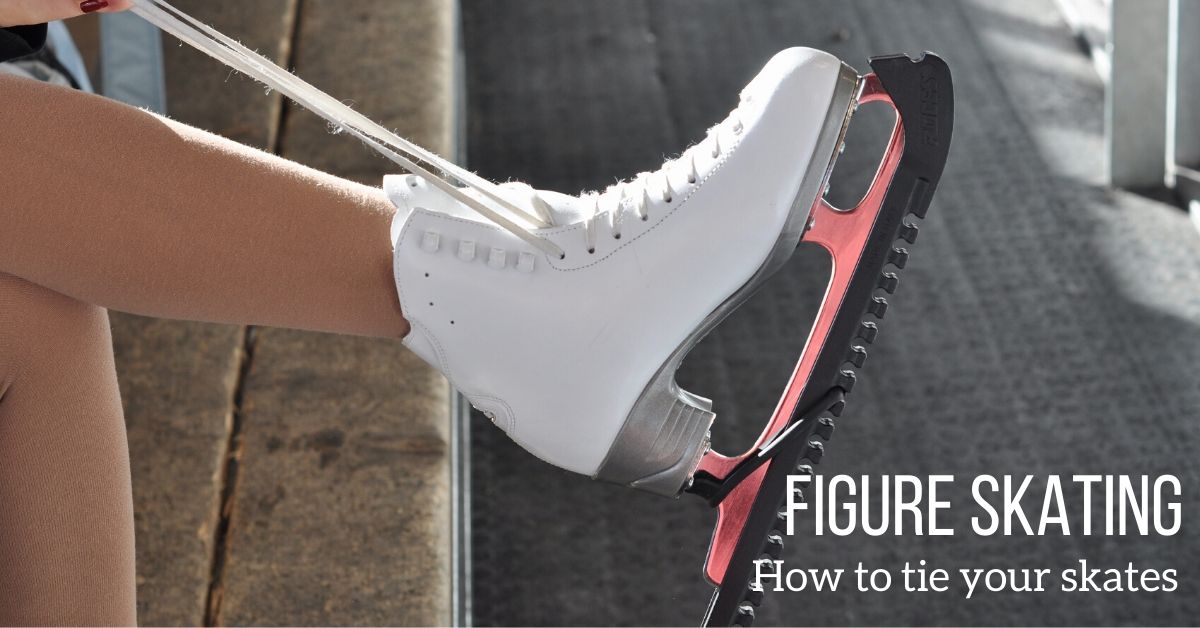
The overall rule
For specific way of lacing various sections of your figure skates, you may hear different opinions. However, the general rules of tightening are agreed upon:
Slightly loose - Tight - Slightly loose
Which means:
- slightly loose around the toes to allow for small toe movements inside
- tight around the angle to lock it in place
- slightly loose at the top to allow for flexibility
You will learn more about each of the 8 steps to tie ice skates in the following sections.
Of course, no lacing will fix the situation if the skate does not fit properly.
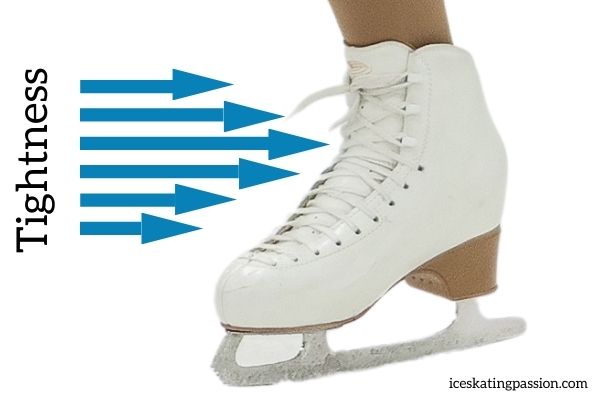
Best ice skate laces and how to set them up
Lace materials
The best laces are partlyt a personal preference. Some people prefer smooth, others prefer rough.
The classic ice skate laces are made of cotton
However, if your laces are too smooth and slipping around in the knots, try a nylon or cotton blend instead of 100% cotton. It is a personal decision and it might feel different & slip less.
Lace size
Make sure you have the correct size of laces. Don't choose too short as you need flexibility to tighten and don't choose them too long because you won't know what to do with the remaining laces at the top and there is a risk that one bunny ear catches a hook of the opposite skate and makes you fall (don't laugh, it happened to me)
How laces should be set up on skates – first use
They are 2 different ways to set up your laces on the skates.
- They both start the same way - enter both ends of the lace in the first eyes and center the lace
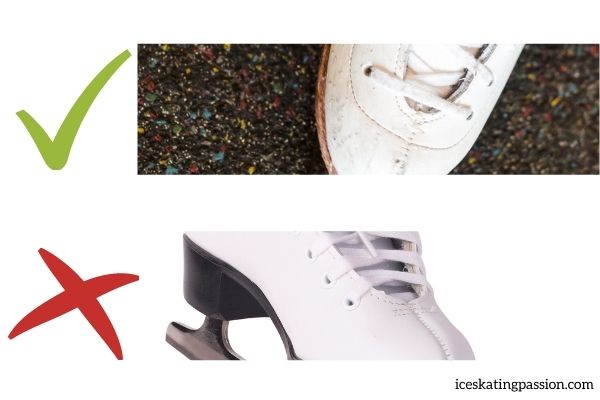
- Then you have to criss cross through the eyelets but people disagree if it is better to insert in the eyelet from the outside or from the inside...
Some say that inserting from the outer side of the eyelet is better, as it helps with self-blocking and lowers the pressure.
Test both and choose what you prefer!
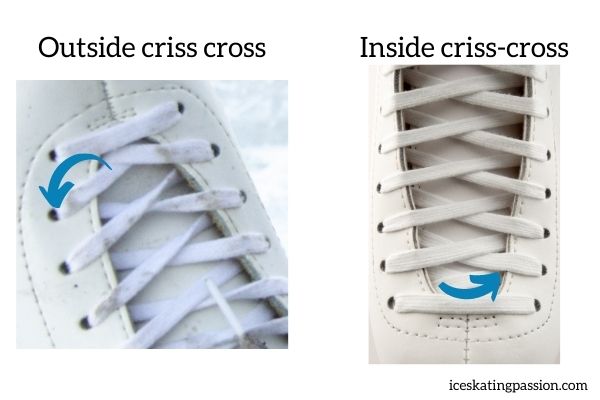
Always carry spare laces
This is something very important to have in your ice skating bag: a pair of spare laces. Laces tend to get damaged as they slide inside the eyelets and rob off the skates. At one point, you will end up with part of your laces in your hand as it breaks off. Make sure to always carry a pair of spare laces inside your bag, especially at competitions.
The best position to tie figure skates - yourself or your kid
Best Positions to lace: tying for yourself
The most comfortable position is when you are sitting on a bench and your skate lays flat on the ground. Do not take your feet up to tighten the lace but keep them firmly on the ground and bend to tie. Lifting the foot will make things uneven and demand you more effort.
And remember that outside of the ice, your blades should be protected by skate guards.
Best position to lace: tying your child’s skates
When you need to tie the skate for your child - choose the following position to avoid back pain and to make sure that the feet stay in position:
- Have the child sit on a bench
- Stand in from of him / her
- Place the blade between your thighs (towards the knees)
- Lace
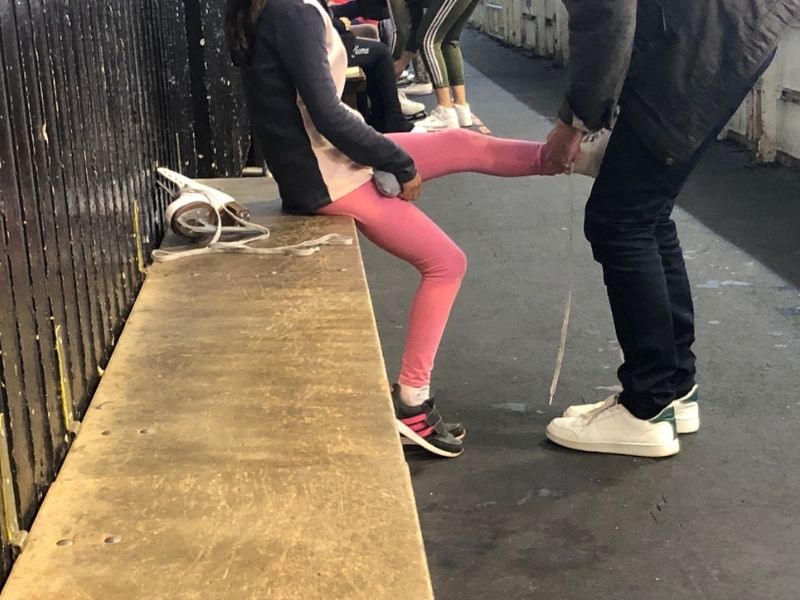
How to tie ice skates on your child
How to lace figure skates - the 8 steps
STEP 1 - Untie your skate all the way
When tying the laces, there must be a proper and comfortable protocol or set of habits followed for maximum effectiveness.
Before entering your foot, untie the skate completely and loosen the shoe, not merely the first two holes. The laces must be open and loose enough so that when you slip your foot in, it reaches the very end.
Note: sometimes ice skating parents are in a hurry and skip this step, but they end up losing more time
Tip: since you should take the skates out once at home for them to dry out, open them very well to improve the process and to be ready for next practice.
STEP 2 - Tie the bottom - toe area
First check that the tongue is placed in proper alignment and not folded anywhere.
Start tightening the laces around the toes and work your way up the boot.
At the beginning, you must tighten a little. But not so much that your toes can't wiggle inside anymore.
Step 4 - Tighten the middle
The area where the ankle bends should be quite tight.
So, as the laces get out of the holes, give them a good tug.
Then you need to secure the lacing, make a knot and add a half turn. It locks the lacing, and the ankle in the boot.
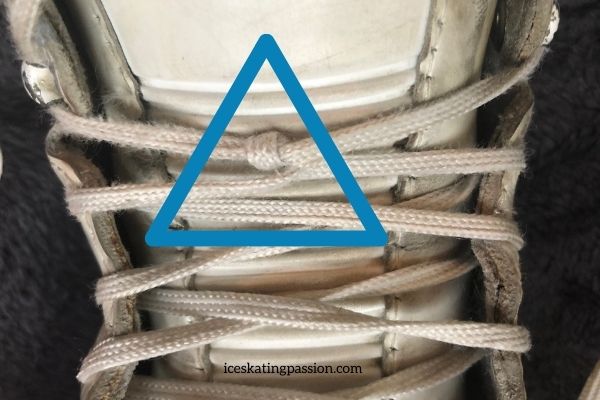
Step 5 - Criss cross the top
Then criss-cross the laces around the hooks all the way to the top.
Make it tighter at the bottom and looser at the top.
Here again there are 2 schools: either turn around each hook from under or from over. You should try both and see what works best for you.
Make sure to leave room for the ankle to flex.
STEP 6 - Finish with a secure Knot
A firm double bowknot is recommended to secure your laces. This knot locks the laces in place and prevents sliding.
STEP 7 - Walk a little and retie if needed
After your laces are done and the shoe fits snugly on the foot, you can walk around a little and feel the position of your feet in the skate. Re-tie if its uncomfortably tight or so loose your foot is sliding around the inside of the shoe.
The need to re-lace is higher if you feel the skate is too loose. Don’t get lazy and just leave it, but redo as it can prevent an injury. Unstable ankles are one of the first causes of injuries.
Figure skates should never be too tight. If you have stiffness bending your knees, go back and re-tie them. Make sure the skate tongue is properly aligned and straight and does not slip under the laces.
STEP 8 - Take care of the lace ears and ends
What to do with the hanging lace ends and loops?
- They should never hang around or touch the ice
- If they are too long - Never wrap extra laces around your ankle or boot (it prevents from bending). Buy a shorter pair.
- I do recommend wearing either a long legging over the boot, or a skate cover or a leg warmer. This way the loops are not flying and do not risk catching the hook of the opposite skate.
Should you use a lace tightener?
Overall, I am not a big fan of lace tighteners because it makes is harder to balance to tightness.
However, laces do damage your hands especially when they are dry (in the cold ice rink).
And lacing with your bare hands can start hurting.
In that case a tightener can be the solution for you.
You might also be interested in:
